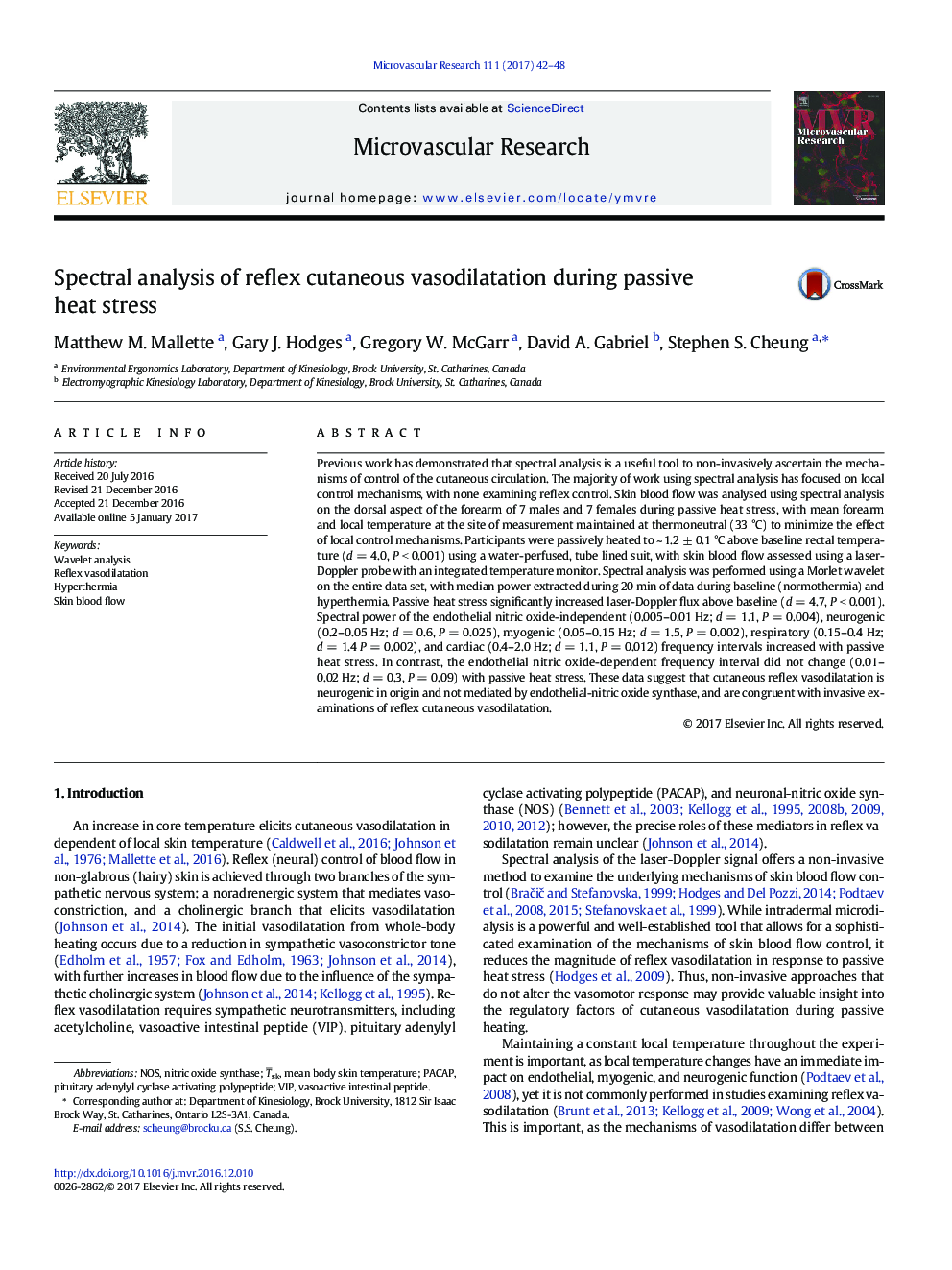| کد مقاله | کد نشریه | سال انتشار | مقاله انگلیسی | نسخه تمام متن |
|---|---|---|---|---|
| 5513723 | 1541273 | 2017 | 7 صفحه PDF | دانلود رایگان |
- We examined skin blood flow during passive heat stress using spectral analysis.
- Local temperature of the forearm was maintained in a thermoneutral state.
- Forearm skin blood flow increased in response to passive heat stress.
- Power did not change in the nitric oxide (NO)-dependent frequency band.
- Power increased in NO-independent, neural, myogenic, respiratory, and cardiac bands.
Previous work has demonstrated that spectral analysis is a useful tool to non-invasively ascertain the mechanisms of control of the cutaneous circulation. The majority of work using spectral analysis has focused on local control mechanisms, with none examining reflex control. Skin blood flow was analysed using spectral analysis on the dorsal aspect of the forearm of 7 males and 7 females during passive heat stress, with mean forearm and local temperature at the site of measurement maintained at thermoneutral (33 °C) to minimize the effect of local control mechanisms. Participants were passively heated to ~ 1.2 ± 0.1 °C above baseline rectal temperature (d = 4.0, P < 0.001) using a water-perfused, tube lined suit, with skin blood flow assessed using a laser-Doppler probe with an integrated temperature monitor. Spectral analysis was performed using a Morlet wavelet on the entire data set, with median power extracted during 20 min of data during baseline (normothermia) and hyperthermia. Passive heat stress significantly increased laser-Doppler flux above baseline (d = 4.7, P < 0.001). Spectral power of the endothelial nitric oxide-independent (0.005-0.01 Hz; d = 1.1, P = 0.004), neurogenic (0.2-0.05 Hz; d = 0.6, P = 0.025), myogenic (0.05-0.15 Hz; d = 1.5, P = 0.002), respiratory (0.15-0.4 Hz; d = 1.4 P = 0.002), and cardiac (0.4-2.0 Hz; d = 1.1, P = 0.012) frequency intervals increased with passive heat stress. In contrast, the endothelial nitric oxide-dependent frequency interval did not change (0.01-0.02 Hz; d = 0.3, P = 0.09) with passive heat stress. These data suggest that cutaneous reflex vasodilatation is neurogenic in origin and not mediated by endothelial-nitric oxide synthase, and are congruent with invasive examinations of reflex cutaneous vasodilatation.
Journal: Microvascular Research - Volume 111, May 2017, Pages 42-48
